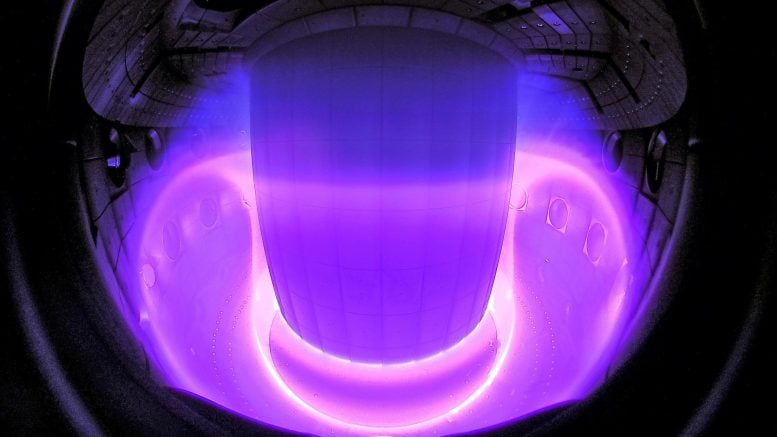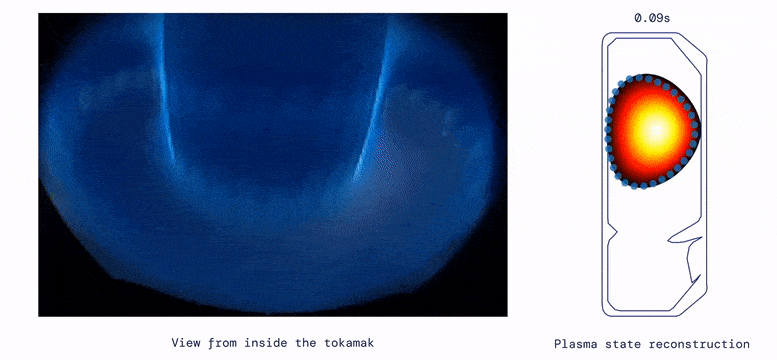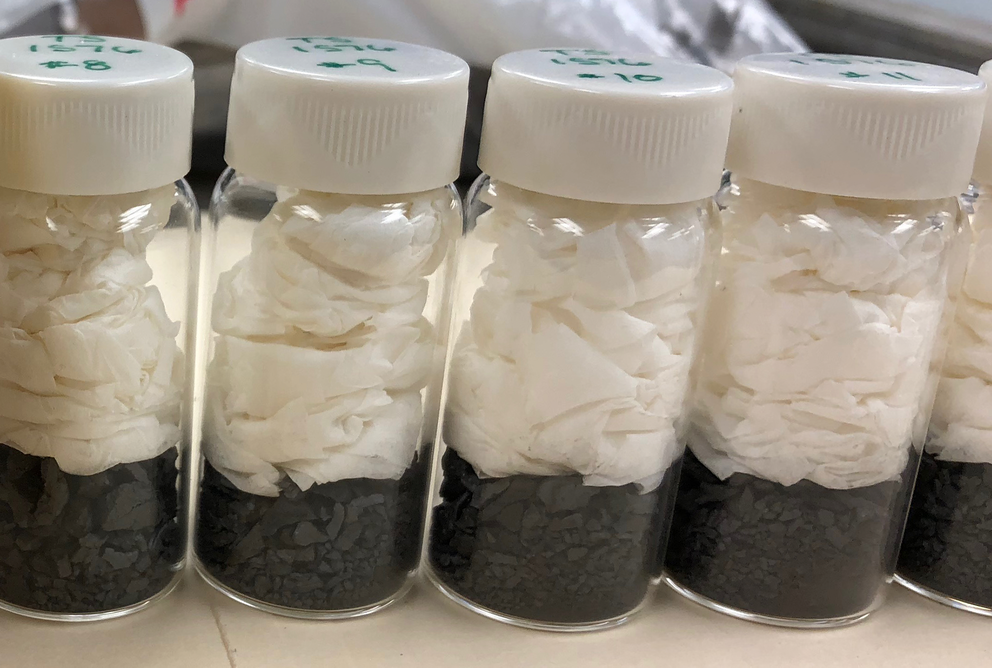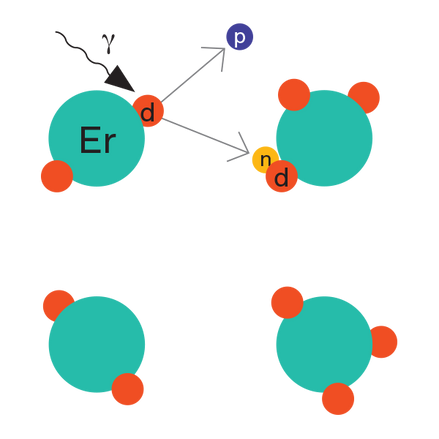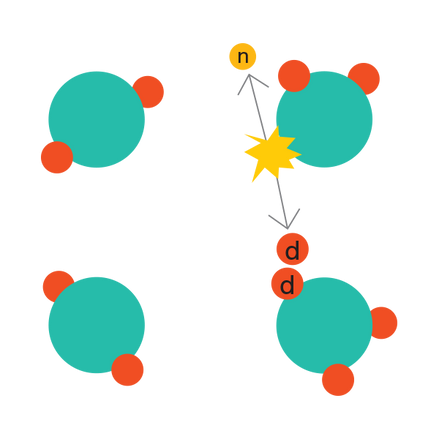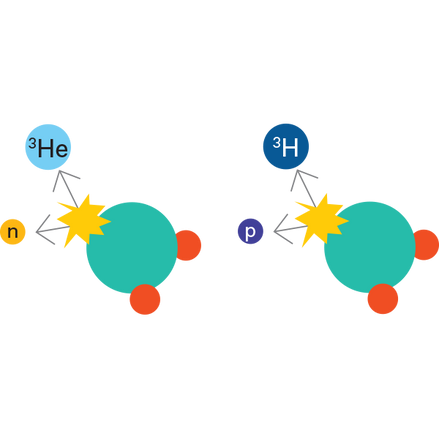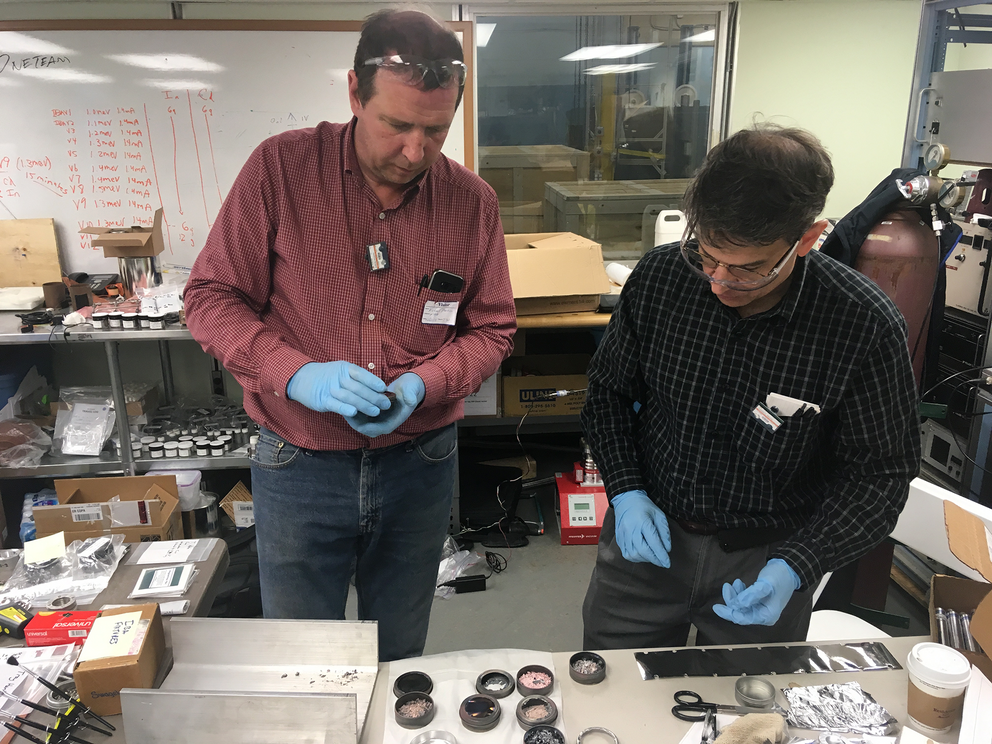Are biofuels better for the environment?
By Christopher McFadden

Biofuel factory.photosbyjim/iStock
The combustion engine is, hands down, one of the most important inventions of all time. But, it comes with a very high cost to the environment - hazardous emissions.
While many leaps in efficiency and emission control have been made over the decades, we can never fully eliminate the release of emissions like carbon dioxide into the air. But, what if the fuel for these engines could be grown rather than dug up?
And that is precisely the promise that biofuels have made over the last few decades. However, not everything is all that it seems when it comes to this "holy grail" of clean energy.
What are biofuels?
Biofuels, as the name might suggest, are types of liquid and gas fuels created "naturally" through the conversion of some kind of biomass. While the term can be used to encompass solid fuels, like wood, these are more commonly termed biomass rather than biofuel per se.
For this reason, biomass tends to be used to denote the raw material that biofuels are derived from or those solid fuels that are created by thermally or chemically altering raw materials into things like torrefied pellets or briquettes.

Various forms of biofuels exist but are by far the most commonly used today are ethanol (sometimes called bioethanol) and biodiesel.
The former is an alcohol and is usually blended with more conventional fuels, like gasoline, to increase octane and cut down on the toxic carbon monoxide and smog-causing emissions usually associated with combustion engines. The most common form of the blend, called E10, is a mixture of 10 percent ethanol and 90 percent gasoline.
Some more modern vehicles, called flexible-fuel vehicles, can actually run on another blend of ethanol and gasoline called E85 that contains between 51 percent and 83 percent ethanol. According to the U.S. Department of Energy, roughly 98% of all gasoline you put in your car will contain some percentage of ethanol.
Most ethanol for fuel use is made from plant starches and sugars but there are an increasing number of biofuels in development that use cellulose and hemicellulose. These are the non-edible fibrous material that constitutes the bulk of plant matter. To date, several commercial-scale cellulose-based ethanol biorefineries are currently operational in the United States.
The most common plant "feedstock" used to make ethanol, are corn, grain, and sugar cane.
As with alcohol production, as for your favorite beer or wine, bioethanol is created through the age-old process of fermentation. As with alcoholic beverages, microorganisms like bacteria and yeast use plant sugars as an energy source and produce ethanol as a waste product.
This ethanol can then be fractionated off, distilled, and concentrated ready for use as a liquid fuel. All is well and good, but blending with ethanol does come at a cost.

As the U.S. Department of Energy explains, "ethanol contains less energy per gallon than gasoline, to varying degrees, depending on the volume percentage of ethanol in the blend. Denatured ethanol (98% ethanol) contains about 30% less energy than gasoline per gallon. Ethanol’s impact on fuel economy is dependent on the ethanol content in the fuel and whether an engine is optimized to run on gasoline or ethanol."
Biodiesel, the other most common biofuel, is made from vegetable and animal fats and is generally considered a cleaner-burning direct replacement for petroleum-based diesel fuel. It is non-toxic, biodegradable, and is produced using a combination of alcohol and vegetable oil, animal fat, or recycled cooking grease. It is a mono-alkyl ester produced by the process of transesterification, where the feedstock reacts with an alcohol (such as methanol) in the presence of a catalyst, to produce biodiesel and glycerin.
Like ethanol, biodiesel can be blended with regular diesel to make cleaner fuels. Such fuels range from pure biodiesel, called B100, with the most common blend, B20, consisting of 20 percent biodiesel and 80 percent fossil-fuel diesel.
Just like ethanol, biodiesel is not without its own problems when compared to more traditional fuels. For example, it can be problematic in colder climates as it has a tendency to crystallize. Generally speaking, the less biodiesel content, the better the performance of the fuel in cold climates.
This issue can also be overcome by adding something called a "flow improver" that can be added to the fuel to prevent it from freezing.
Another form of biodiesel that is also quite popular is "green diesel", or renewable diesel. Formed by the hydrocracking of vegetable oils or animal fats (or through gasification, pyrolysis, or other biochemical and thermochemical technologies) to produce a product that is almost indistinguishable from conventional diesel.
Vegetable oil can also be used unmodified as a fuel source in some older diesel engines that don't have common fuel injection systems.

Other forms of biofuel also exist, including biogas or biomethane that are created through the process of anaerobic digestion (basically rotting) of organic material. "Syngas," another form of biofuel gas is created by mixing carbon monoxide, hydrogen, and other hydrocarbons through the partial combustion of biomass.
Worldwide biofuel production reached in excess of 43 billion gallons (161 billion liters) in 2021, constituting around 4% of all the world's fuel used for road transportation. This is hoped by some organizations, like the International Energy Agency, to increase to 25% by 2050.
Why are biofuels considered green?
In order to fully answer this question, we need to take a little trip back in time. Around the turn of the 21st-century, many governments around the world were scratching their heads trying to figure out ways to combat the amount of carbon emissions their countries were emitting.
One of the main polluting activities happened to be the cars and trucks used to ferry people and stuff around. In fact, this is one of the largest contributing factors to human global carbon dioxide emissions that, according to some sources, account for almost a quarter of all annual emissions around the world.
The transport sector is also one of the fastest-growing around the world, as a result of the growing use of personal cars in many countries around the world. Of these, the vast majority are still combustion-engine vehicles rather than "cleaner" solutions like the growing electrical vehicle market.

Something, in their view, needed to be done about this and so the concept of biofuels was proposed as a potential "silver bullet".
Since biofuels are formed, primarily, from the growth and harvesting of living plant material rather than long-sequestered hydrocarbon sources like fossil fuels. The main argument is that biofuels draw down as much carbon dioxide, more or less, as they release when combusted. This is because carbon is stored in the plant tissue and soil as plants grow.
They are, in effect, "carbon neutral", and in some cases have been shown to be carbon negative - in other words, they remove more carbon from the atmosphere than is released when they are harvested, processed, and burned/converted.
There are other benefits to biofuel feedstocks too, including, but not limited to, the generation of co-products like protein that can be as animal feed. This saves energy (and therefore associated carbon dioxide emissions) that would otherwise have been used to make animal feed by other means.
To this end, some countries went full-bore with the idea, with countries like Brazil establishing a full-blown bioethanol industry about 40 years ago. Other countries began to follow suit. In 2005, the United States established its first national renewable fuel standard under the "Energy Policy Act". This piece of legislation called for 7.5 billion gallons of biofuels to be used annually by 2012.
This act also required fossil fuel-producing companies to mix biofuels with regular liquid fuels to reduce their long-term impact on the environment. The European Union produced a similar requirement in its 2008 "Renewable Energy Directive", which required EU countries to source at least 10 percent of their transport fuel from renewable sources by 2020.
The stringent requirement has resulted in a huge growth in the biofuel industry around the world. But, how accurate are the claims that biofuels are better for the environment than, say, fossil fuels?
Are biofuels actually better for the environment?
Like anything in life, it is important to remember that there is no such thing as a perfect solution, only a compromise. For all the benefits that products like biofuels yield, they have some very important drawbacks and even environmental impacts that cannot be ignored if we are being truly honest about them.
For example, the widely held claim that biofuels are carbon-neutral, or even negative, is not all that it claims to be. Various studies on this subject have shown that different biofuels vary widely in their greenhouse emissions when compared, like-for-like, with gasoline.
Biofuel feedstocks have many other associated costs with their production, such as harvesting, processing, and transportation that are often not always factored into calculations or are outright ignored. In some cases, depending on the methods used to produce the feedstock and process the fuel, more greenhouse gas emissions can arise when compared to fossil fuels.
Discussion on this topic tends to place the most emphasis on carbon dioxide, but it is but one of the many harmful emissions that can have very serious consequences on the environment. Nitrous oxide, NOx for short, is another.
Not only is NOx an important component for the formation of harmful effects like acid rain, but it also has a very significant so-called "global warming potential" orders of magnitude higher than carbon dioxide - around 300 times in fact. Not only that, but nitrous oxide stays in the atmosphere for far longer - 114 years compared to about 4 years for carbon dioxide.
NOx also happens to be particularly bad for the ozone layer too - which is not nice. And it doesn't end there.
Nitrous oxides are generated at others stages of biofuel production and final use when combusted as an actual fuel on your car.

In fairness, all forms of agriculture release nitrous oxide to some degree, so biofuel production should not be blamed in isolation for any increase in NOx emissions over the last few decades, but since it is promoted heavily by many governments, there is an urgent need for more research to be done on the impact of biofuels on NOx emissions.
Another potentially important difference between biofuels and conventional fossil fuels is carbonyl emissions. Carbonyl is a divalent chemical unit consisting of carbon (C) and an oxygen (O) atom connected by a double bond and is a constituent part of molecules like carboxylic acids, esters, anhydrides, acyl halides, amides, and quinones, among other compounds.
Some carbonyls, like those listed above, are known to be potentially very hazardous to human health. Studies on this subject have found that biofuels, like biodiesels, release considerably more carbonyl emissions like formaldehyde, acetaldehyde, acrolein, acetone, propionaldehyde, and butyraldehyde, than pure diesel.
Yet other studies have revealed that the combustion of biofuels also comes with an elevated emission of some other hazardous pollutants like volatile organic compounds (VOCs), polycyclic aromatic HCs, and heavy metals) have been reported to endanger human health.
Another very serious issue with biofuels is their direct and indirect greenhouse gas emissions from land-use changes. For example, land clearance of forests or grasslands to release land for biofuel production has a very serious impact on the environment.

Some studies have shown that this kind of activity can release hundreds to thousands of tonnes of carbon dioxide per hectare for the sake of "saving" 1.8 tonnes per hectare per year for maize grown for bioethanol or 8.6 tonnes per hectare per year for switchgrass. The land is also converted from growing food for consumption to biomass for use in fuel.
This has been reinforced only recently, with a study on the use of corn-ethanol fuels in the U.S. This study identified that the rise in demand for corn as a feedstock for biofuels resulted in a jump in price and, therefore, incentivize the conversion of land for the cultivation of corn.
Other studies also show a serious "opportunity cost" for using valuable land in this way too. If governments are serious about reducing carbon dioxide levels in the atmosphere, the land, if converted from the forest, for example, should have been left the way it was. A better strategy might be to actually reforest existing farmland that has been converted for biofuel production as well.
The conversion of wild virgin lands for biofuel production also has serious implications for biodiversity and local habitats too for obvious reasons. Research also suggests that the production of biofuel feedstocks such as corn and soy, could increase water pollution from nutrients, pesticides, and sediment and deplete aquifers.
There is another area where biofuels appear to be considerably safer for the environment, however - biodegradation. Various studies have shown that biofuels, neat vegetable oils, biodiesel, petroleum diesel blends, and neat 2-D diesel fuel tend to break down in the environment much faster than conventional petrol or diesel.
Under controlled conditions, these substances are broken down about 5 times faster than petroleum or diesel and also leave far fewer toxic byproducts. This is encouraging and would indicate that events such as oil spills could be less of an environmental disaster if the tanker is filled with biofuels.
So, are biofuels all they are cracked up to be?
In short, yes, but also no. While some biofuels are clearly better for the environment than continuing to dig up and burn fossil fuels, a more all-encompassing view needs to be taken by regulators and decision-makers. Not all biofuels and methods of biofuel production have the same impact

We have already covered some of the issues above, like focussing on reforestation instead, but other things can also be done, too.
Energy conservation and improved efficiency are critical factors. The combustion engine, while receiving a lot of bad press over recent decades, is still one of the best machines for converting fuel to do useful work that our species has ever devised.
It has quite literally revolutionized our way of life. If more focus was put on improving their efficiency than outright banning them, significant improvements in emissions could be made over time.
According to some studies, in the United States, an improvement in efficiency by only one mile per gallon for every vehicle has been shown to reduce greenhouse gas emissions more than all "savings" provided by all biofuel maize production. Other incremental improvements are also in development that could further improve the efficiency of combustion engines too.
One example, called Transient Plasma Ignition, is a like-for-like replacement for traditional spark plugs that have been shown to dramatically increase combustion efficiency in combustion engines by as much as 20%. These kinds of spark plugs also benefit from a longer lifespan than conventional ones.
But, such solutions still rely on the digging up and use of fossil fuels. With the drive, pun intended, for the decarbonization of many economies around the world, such technologies only realistically offer a brief reprieve for the internal combustion engine going forward.
But, that doesn't mean research and development in this field should be eased up. Any benefits made to the efficiency of internal combustion can be used to also, albeit indirectly, increase the efficiency of biofuels in combustion engines.

But, there are some areas where biofuels are clearly advantageous. In many cases, biowaste from other industrial processes can be turned into biofuels rather than thrown away. Whether it be digestion of waste food to make biogas/bio-LPG or turning waste products from beer production into biofuel.
And it is this that might, in the end, might be the main benefit of biofuels over their conventional fossil fuel alternatives. If more emphasis is put on using the waste products from existing processes to make biofuels rather than converting virgin land or agricultural land for feedstock crops, we can get all the benefits of biofuels with less of its environmental costs.
That is, of course, as long as our species continues to use combustion-based energy production. Which is likely going to continue for many years to come.
They are, after all, so good at what they do.




